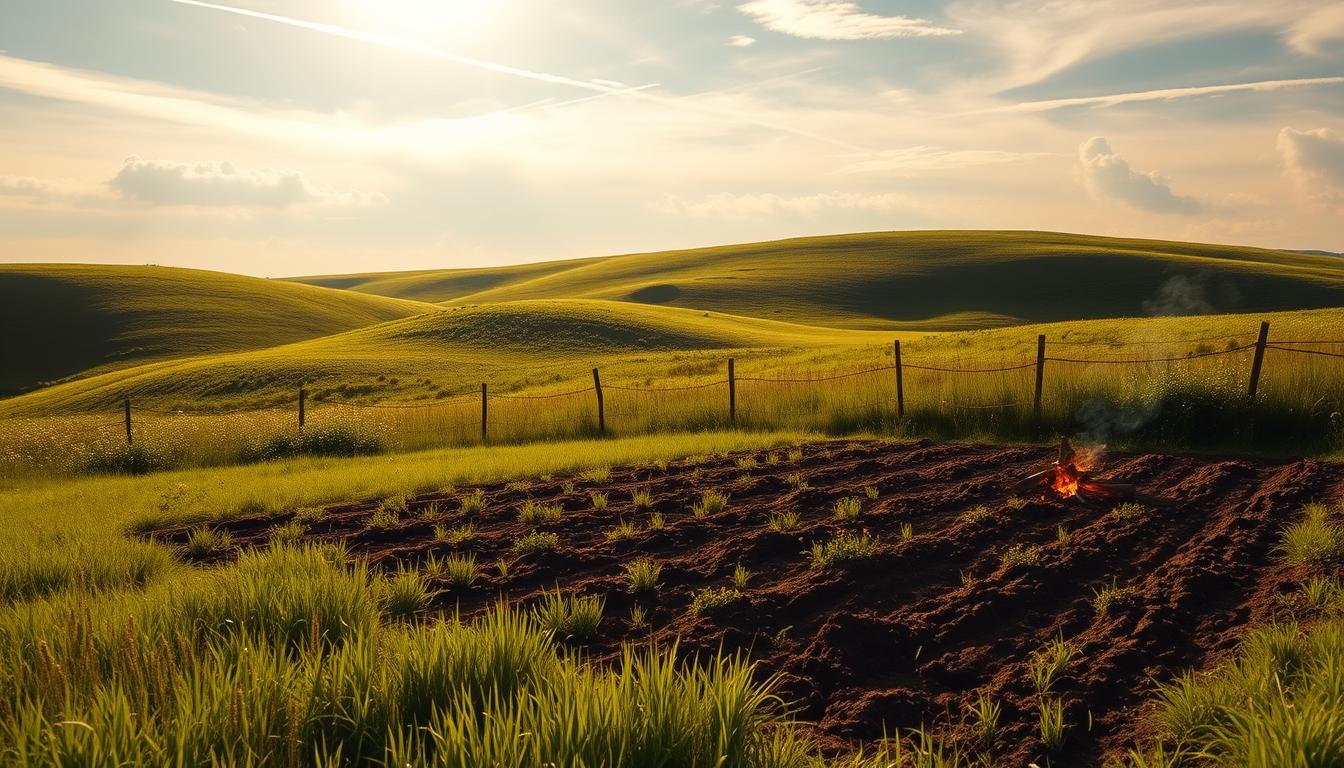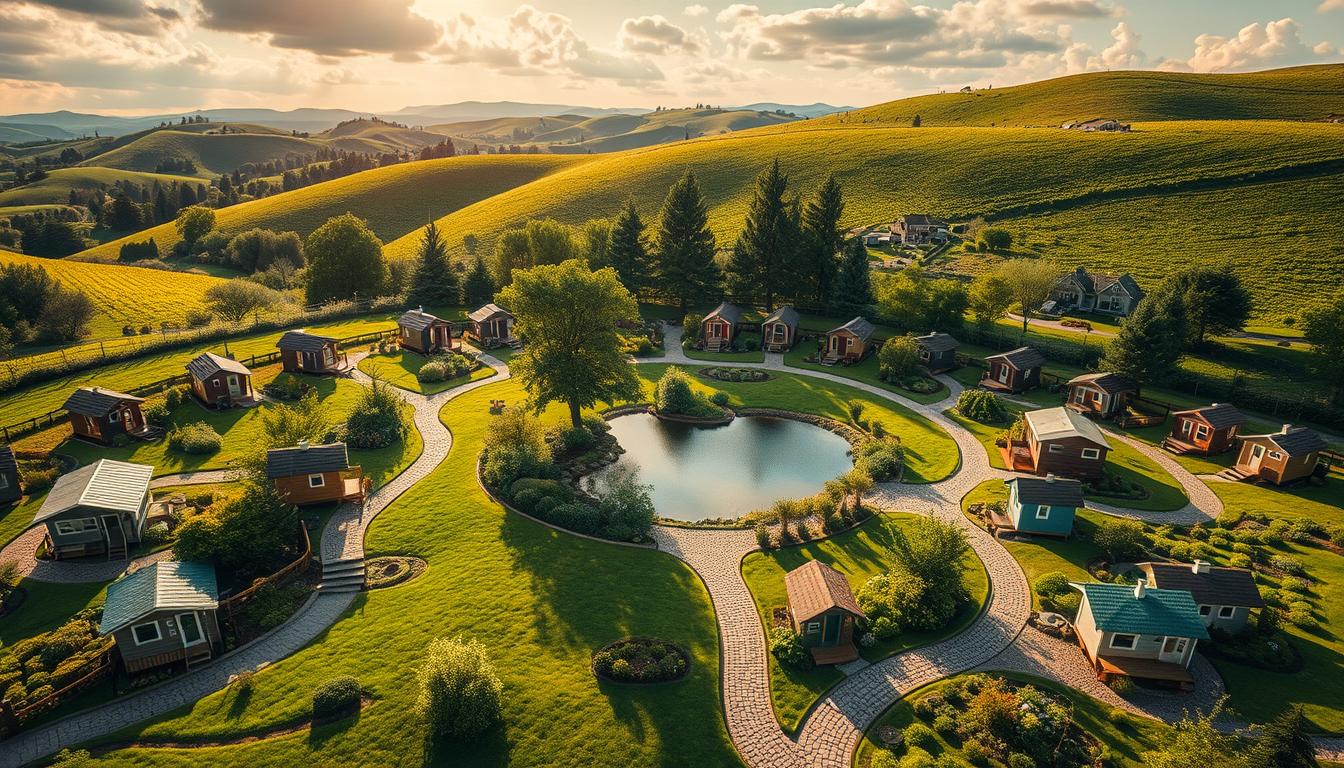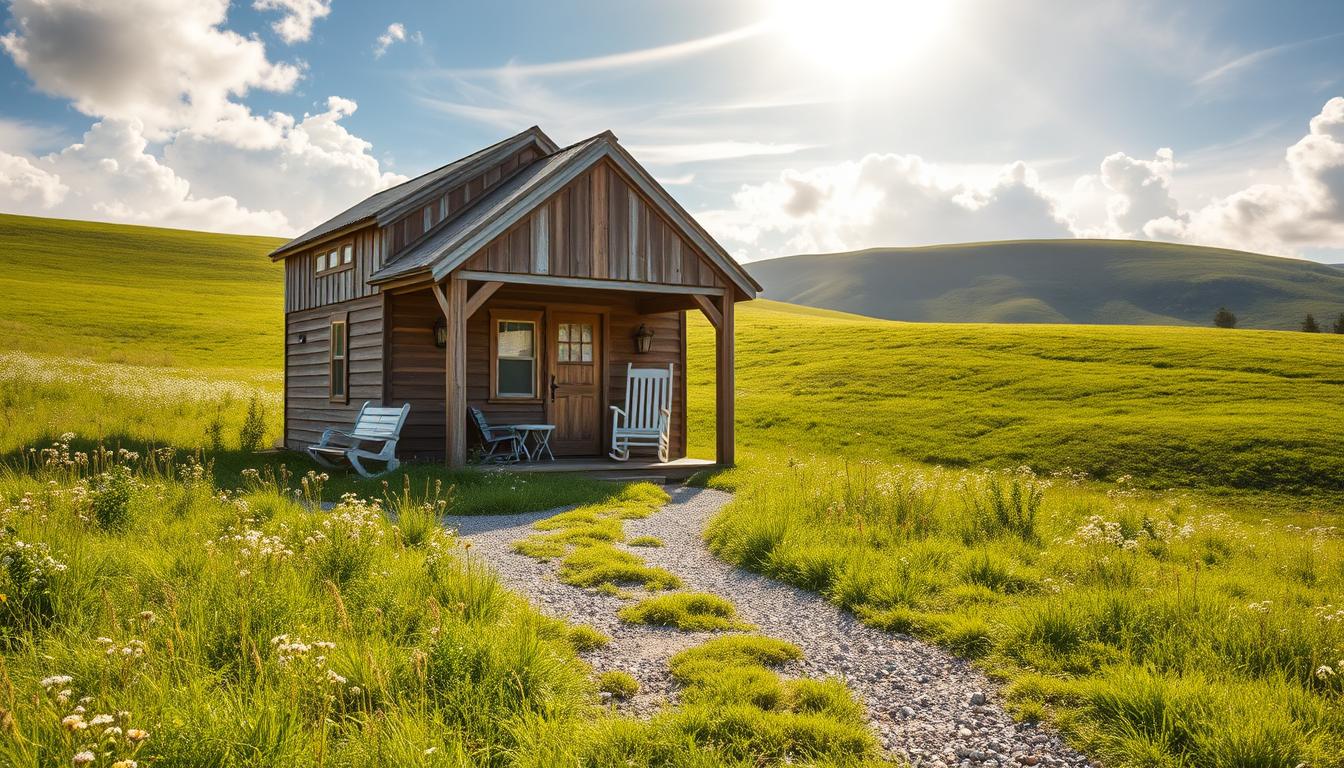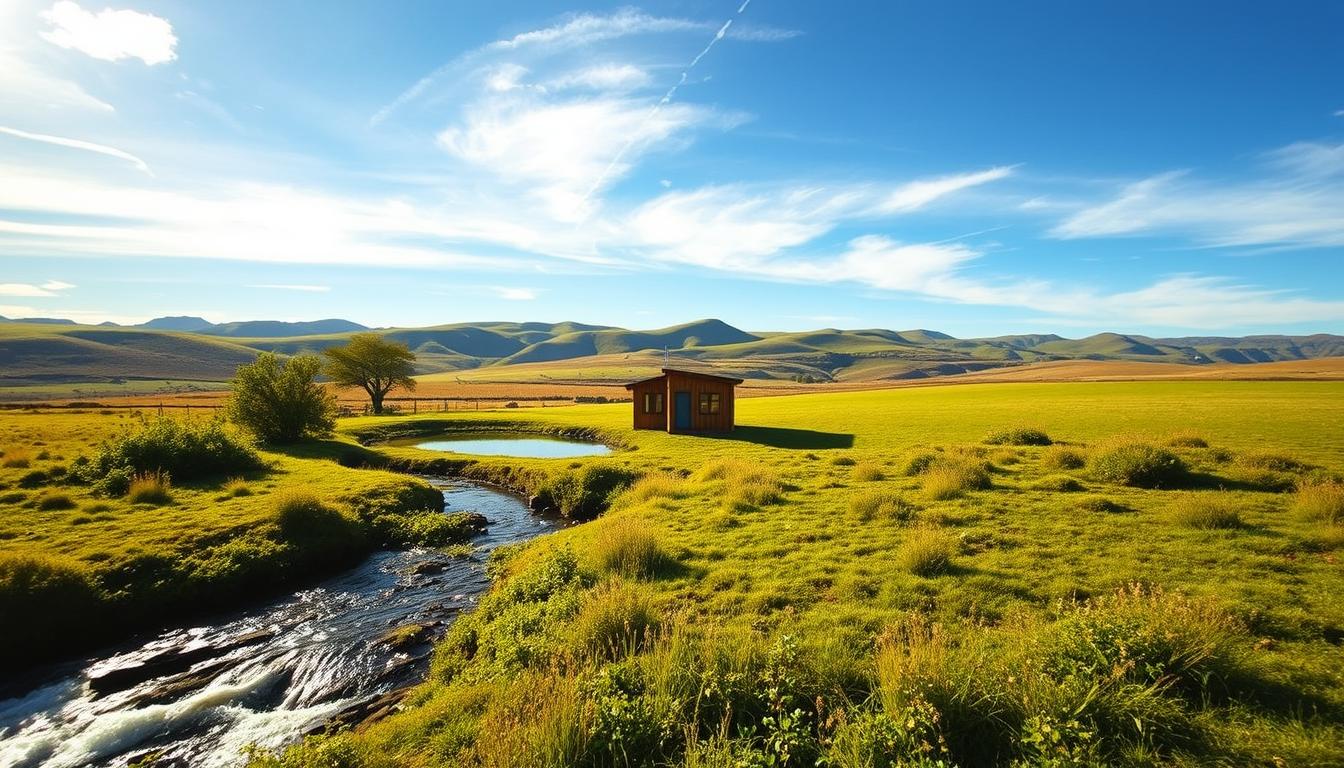What you will learn by reading this article:
- How to research local zoning laws and regulations for renting land for a tiny house.
- How to identify your specific needs and preferences when renting land for a tiny house.
- Tips for finding available land for rent and evaluating potential rental properties.
Tiny houses have become increasingly popular as people seek a simpler and more sustainable way of living. These compact and efficient homes offer affordability, flexibility, and a reduced environmental footprint. One crucial aspect of living in a tiny house is finding the perfect spot to park or place it. Renting land for your tiny house allows you to customize your living space, enjoy mobility, and access essential amenities. In this comprehensive guide, we will explore the process of renting land for your tiny house and provide valuable insights to help you find your dream spot.

Understanding Local Zoning and Regulations
Before you start searching for land for your tiny house, it’s crucial to understand and comply with local zoning laws and regulations. Zoning restrictions vary from one area to another and can significantly impact your ability to rent land for your tiny house. Some areas may have specific regulations that allow or prohibit tiny houses on residential properties, while others may have minimum square footage requirements. Researching and understanding these regulations will save you time, money, and potential legal complications.
To find information about specific zoning regulations in your area, visit your local government’s website. Many municipalities have zoning maps and bylaws available online. Additionally, websites like TinyHouseCommunity.com and TinyHouseMap.com provide resources and forums where you can connect with others who have experience in renting land for tiny houses.
It’s important to note that despite the increasing popularity of tiny houses, some areas may have restrictions that make it challenging to find suitable land for rent. For instance, some communities may require tiny houses to be located within designated tiny house communities or on privately owned land. Understanding these potential challenges and restrictions will help you set realistic expectations and make informed decisions.
Identifying Needs and Preferences for Land Rental
Renting land for your tiny house offers the opportunity to customize your living experience according to your needs and preferences. Before you begin your search, it’s essential to identify and prioritize what you’re looking for in a rental property. Consider factors such as location, land size, proximity to amenities, and accessibility.
Location plays a vital role in determining your overall living experience. Consider whether you prefer a rural, suburban, or urban setting. Think about the climate and weather conditions that are most suitable for your lifestyle. Additionally, consider the proximity to essential amenities such as grocery stores, healthcare facilities, and recreational areas.
Land size is another crucial consideration. Determine the minimum amount of land you require to accommodate your tiny house comfortably. Think about outdoor space for gardening, parking, or socializing. Consider whether you prefer a fenced-in property or open land.
Accessibility is an essential factor to consider, especially if you plan to live in your tiny house full-time. Ensure that the property has proper road access and is within a reasonable distance from public transportation if needed.
By prioritizing these factors and creating a list of requirements, you can narrow down your search and focus on finding the land that meets your specific needs.
Finding Available Land for Rent
Once you’ve identified your needs and preferences, it’s time to start searching for available land to rent. There are several avenues you can explore to find potential rental properties. Online platforms such as Craigslist, Zillow, and TinyHouseListings.com often have listings for land rentals suitable for tiny houses. Additionally, local classifieds in newspapers or community websites may have listings specifically tailored to your area.
Word of mouth can also be a powerful tool in finding available land for rent. Spread the word among your network of friends, family, and colleagues that you are searching for land. They may have connections or know someone who has land available for rent.
When searching for land, be sure to use specific keywords related to your needs, such as “land for rent tiny house” or “land for tiny house parking.” This will help you find listings that are more relevant to your search.
As you come across potential rental properties, make a note of their details, including the contact information of the landowner or property manager. It’s important to reach out and discuss the rental terms and agreements before making any decisions.

Evaluating Potential Rental Properties
Finding potential rental properties is just the first step. It’s crucial to visit and evaluate each property before making a final decision. Physical visits allow you to assess various aspects that may not be evident from online listings.
During property visits, consider the condition of the land. Look for any potential issues such as uneven terrain, drainage problems, or encroachments. Evaluate the availability and quality of utilities such as water, electricity, and sewage. Assess the proximity to services like grocery stores, hospitals, and schools.
Create a checklist of considerations to ensure you don’t miss any crucial details during property visits. This checklist may include factors such as:
- Land condition and suitability for your tiny house
- Utility access and availability
- Proximity to essential services and amenities
- Noise levels and neighborhood characteristics
- Safety and security of the area
Take the opportunity to ask questions and clarify any doubts with the landowner. Inquire about restrictions, such as whether you can make modifications to the land or add structures. Understanding these details will help you make an informed decision and ensure a positive rental experience.
| Consideration | Description |
|---|---|
| Land condition and suitability for your tiny house | Assess the condition of the land and determine if it is suitable for your tiny house. |
| Utility access and availability | Check if there is access to water, electricity, and sewage systems. |
| Proximity to essential services and amenities | Evaluate the distance to grocery stores, hospitals, schools, and other necessary services. |
| Noise levels and neighborhood characteristics | Consider the noise levels and characteristics of the neighborhood. |
| Safety and security of the area | Assess the safety and security of the area. |
Negotiating Rental Terms and Agreements
Once you have identified a potential rental property that meets your needs, it’s time to negotiate the rental terms with the landowner. Start by discussing the lease duration, rental fees, and any additional responsibilities or restrictions that may apply. It’s important to have a clear understanding of what is expected from both parties.
Having a written agreement is crucial to protect the interests of both the tenant and the landowner. The agreement should outline the rental terms, payment schedule, maintenance responsibilities, and any specific rules or regulations that apply. If you’re unsure about drafting a rental agreement, seek legal advice to ensure all necessary elements are included.
When negotiating, be prepared to compromise and find a mutually beneficial agreement. Consider factors such as the location, condition of the land, and the demand for renting land for tiny houses in the area. By maintaining open and respectful communication, you can increase the chances of securing a favorable rental agreement.

Setting Up Utilities and Infrastructure
After finalizing the rental agreement, it’s time to set up the necessary utilities and infrastructure for your tiny house. Depending on the location and condition of the land, you may need to connect to water, electricity, and sewage systems.
Contact the local utility companies to inquire about the process of setting up these connections. They will guide you through the necessary steps, including obtaining permits and scheduling inspections. It’s crucial to comply with all local regulations and requirements to ensure a smooth and legal utility setup.
In some cases, utilities may not be readily available, especially if you’re renting land in remote areas. Explore alternative options such as solar power, rainwater harvesting, and composting toilets. These off-grid solutions can provide a sustainable and self-sufficient living experience.
Establishing a Positive Relationship with the Landowner
Maintaining a positive and respectful relationship with the landowner is essential throughout your rental period. By establishing a good rapport, you increase the likelihood of lease extensions, flexibility in terms, and potential future rental opportunities.
Effective communication is key to a positive landlord-tenant relationship. Respond promptly to any inquiries or concerns raised by the landowner. Keep them informed about any maintenance or repairs you undertake on the property. Respect the boundaries set by the landowner and ensure you abide by any rules or restrictions outlined in the rental agreement.
Paying rent on time is crucial for maintaining a positive relationship. Set up a system that ensures prompt payment and avoids any late fees or disputes. By demonstrating your reliability as a tenant, you increase the likelihood of a harmonious rental experience.
Case Study: Sarah’s Journey of Renting Land for Her Tiny House
Sarah had always dreamed of living a simpler and more sustainable lifestyle. She was captivated by the idea of living in a tiny house, but she didn’t have her own land to park it on. Determined to make her dream a reality, Sarah embarked on a journey to find the perfect spot to rent for her tiny house.
Understanding Local Zoning and Regulations
Sarah started her journey by researching local zoning laws and regulations for renting land for a tiny house. She discovered that her city allowed tiny houses on residential lots as long as they met certain size requirements. This information gave Sarah confidence that she could find a suitable location for her tiny house.
Identifying Needs and Preferences for Land Rental
Next, Sarah made a list of her needs and preferences for the land she wanted to rent. She prioritized location, wanting to be close to her workplace and amenities like grocery stores and parks. Sarah also preferred a spacious lot with trees for privacy and a peaceful environment.
Finding Available Land for Rent
Using online platforms and local classifieds, Sarah began her search for available land to rent. She reached out to several landowners, asking about the rental terms and explaining her intentions to live in a tiny house. After a few weeks of searching, Sarah found a landowner who was open to renting his property for her tiny house.
Evaluating Potential Rental Properties
Excited about the opportunity, Sarah scheduled a visit to the property. She carefully evaluated the land, checking its condition, accessibility, and utility access. The property met all her requirements, and she felt confident that it would be a great place to call home.
Negotiating Rental Terms and Agreements
Sarah negotiated the rental terms with the landowner, discussing lease duration and fees. They agreed on a one-year lease with the option to renew, and they established a fair rental price that worked for both parties. Sarah made sure to have a written agreement in place to protect her interests and ensure a positive landlord-tenant relationship.
Setting Up Utilities and Infrastructure
With the rental agreement in place, Sarah started the process of setting up utilities for her tiny house. She worked closely with the landowner to obtain the necessary permits and inspections. Sarah opted for off-grid living, installing solar panels and a rainwater collection system to meet her energy and water needs.
Establishing a Positive Relationship with the Landowner
Throughout her tenancy, Sarah maintained a positive relationship with the landowner. She communicated regularly, promptly paid her rent, and respected the land by keeping it tidy and well-maintained. This positive relationship allowed Sarah to extend her lease beyond the initial year and continue living in her tiny house on the rented land.
Sarah’s journey of renting land for her tiny house has been a fulfilling and transformative experience. She has embraced the benefits of living in a tiny house and enjoying a simpler, more sustainable lifestyle. Sarah encourages others to embark on their own journey and find their dream spot to park their tiny house.
Understanding Legal Obligations and Responsibilities
Renting land for your tiny house comes with legal obligations and responsibilities that must be understood and fulfilled. It is your responsibility to comply with local laws and regulations regarding land use, waste disposal, and property maintenance. Failure to do so may result in fines, legal complications, or even eviction.
Take the time to familiarize yourself with the specific regulations in your area. Consult local government websites, zoning departments, or legal professionals to ensure you are fully aware of your legal obligations. Stay informed about any updates or changes to regulations that may affect your tenancy.
Additionally, be mindful of your responsibilities as a tenant. Maintain the property in good condition, promptly address any maintenance issues, and respect the landowner’s property. By fulfilling your legal obligations and responsibilities, you contribute to a positive rental experience for both parties.
Maximizing the Tiny House Living Experience
Living in a tiny house on rented land offers numerous opportunities to maximize your living experience. Despite the compact size, there are several strategies you can employ to create a comfortable and functional living environment.
Maximize the use of space by incorporating clever storage solutions, such as built-in shelves, multi-functional furniture, and vertical storage. Embrace minimalism and prioritize essential items to reduce clutter and create a sense of openness.
Consider the layout and design of your tiny house to optimize natural light and airflow. Use light colors and reflective surfaces to enhance the perception of space. Incorporate large windows and skylights to bring in as much natural light as possible.
Take advantage of outdoor space by creating functional outdoor living areas. Set up a patio or deck where you can relax, entertain guests, or enjoy meals outdoors. Utilize the land for gardening, growing your own food, or creating a small sustainable garden.
Living in a tiny house on rented land not only offers financial advantages but also contributes to a more sustainable lifestyle. By reducing your ecological footprint, you can minimize resource consumption and live in harmony with the environment.
Future Considerations and Planning
While renting land for your tiny house provides immediate benefits, it’s also essential to consider future possibilities and plan accordingly. As your circumstances change, you may need to adapt your living arrangements or explore opportunities for land purchase or relocation.
If you anticipate a long-term commitment to tiny house living, you may consider purchasing land in the future. Start saving and researching potential areas where you can establish a more permanent tiny house setup. Consult with real estate professionals who specialize in land sales to explore your options.
Additionally, life circumstances may change, and you may decide to relocate or transition to a different living arrangement. Stay informed about the tiny house movement and evolving land rental options. Join online communities and forums to connect with others who share similar aspirations and experiences.
Planning for the future allows you to adapt to changing circumstances and continue enjoying the benefits of tiny house living.
Conclusion
Renting land for your tiny house opens up a world of possibilities for a simpler, more sustainable lifestyle. By understanding local zoning and regulations, identifying your needs and preferences, and effectively searching for available land, you can find your dream spot. Through negotiation, setting up utilities, and establishing a positive relationship with the landowner, you can create a harmonious and fulfilling rental experience. By fulfilling your legal obligations, maximizing the tiny house living experience, and planning for the future, you can embark on a rewarding journey of tiny house living.
At [Your Company Name], we are dedicated to providing you with valuable information and resources for all your tiny house needs. Don’t miss out on our other articles, guides, and videos that can help you navigate the world of tiny house living. From design tips to DIY projects, we’ve got you covered. Visit our website today to explore our content and take your tiny house journey to the next level.
Embrace the possibilities and start your adventure of renting land for your tiny house today. Your dream of a simpler, more sustainable lifestyle is within reach. Let us be your guide on this exciting journey.
FAQs
Q. Who can I rent land for my tiny house from?
A. You can rent land for your tiny house from private landowners or through specialized online platforms.
Q. What are the requirements for renting land for a tiny house?
A. The requirements for renting land for a tiny house vary, but typically include proof of insurance and a lease agreement.
Q. How can I find land to rent for my tiny house?
A. You can find land to rent for your tiny house by searching online platforms, attending tiny house events, or contacting local landowners.
Q. What utilities are usually included when renting land for a tiny house?
A. The utilities included when renting land for a tiny house can vary, but typically include access to water, electricity, and sewage.
Q. How much does it cost to rent land for a tiny house?
A. The cost to rent land for a tiny house can vary depending on location, amenities, and lease terms. It can range from a few hundred to a few thousand dollars per month.
Q. But what if I want to move my tiny house? Can I still rent land?
A. Yes, you can still rent land for your tiny house even if you plan to move it. Look for flexible lease terms or consider renting land in different locations as needed.
William is a seasoned real estate professional with over 10 years of experience in the industry. They have a strong background in land acquisition and development, specializing in finding unique and unconventional housing solutions for clients.
Throughout their career, William has worked closely with individuals interested in alternative housing options such as tiny houses. They have helped countless clients navigate the complexities of local zoning and regulations, ensuring that their housing dreams become a reality.
With a deep understanding of the challenges faced by those seeking to rent land for their tiny houses, William has developed a comprehensive guide to help readers find their dream spot. They have extensively researched various locations and have a wealth of knowledge on how to identify suitable rental properties, negotiate favorable terms and agreements, and set up utilities and infrastructure.
Drawing on their expertise in the field, William also shares valuable insights on establishing positive relationships with landowners, understanding legal obligations and responsibilities, and maximizing the tiny house living experience.
William is passionate about empowering individuals to live a more sustainable and affordable lifestyle through tiny house living. Their expertise and dedication make them a trusted authority on the subject, and readers can rely on their advice to make informed decisions when renting land for their own tiny houses.










